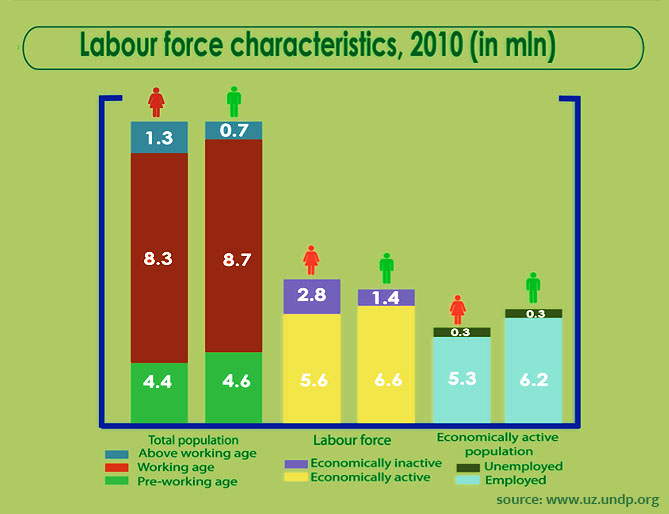Location, Religion, Population, Politics
Location
Uzbekistan lies between latitudes 37° and 46° N, and longitudes 56° and 74° E. It stretches 1,425 kilometres (885 miles) from west to east and 930 kilometres (580 miles) from north to south. Bordering Kazakhstan and the Aral Sea to the north and northwest, Turkmenistan to the southwest, Tajikistan to the southeast and Kyrgyzstan to the northeast, Uzbekistan is one of the largest Central Asian states and the only Central Asian state to border all the other four. Uzbekistan also shares a 150 km (93 mile) with Afghanistan to the south.
Religion
Islam is the dominant religion in Uzbekistan. It has been estimated that around ninety percent of the population are Muslims, mostly Sunni with a Shi’a minority of 5 percent. 9 percent follow Russian Orthodox Christianity. Ethnic Koreans are Buddhist with Jews resident in Uzbekistan for thousands of years. There were estimated to be almost ninety-five thousand Jews in Uzbekistan in the 1989 census, but since the dissolution of the Soviet Union, most Central Asian Jews left the region for the United States, Germany, or Israel. Fewer than 5,000 Jews remained in Uzbekistan in 2007.
Many versions of Islam have been practised in Uzbekistan. The end of Soviet power in Uzbekistan did not bring an upsurge of fundamentalism, as many had predicted, but rather a gradual re-acquaintance with the precepts of the faith. In May 1999, as a response to the threat of Islamic radicalism, the Uzbekistan Parliament revised the 'Law on Freedom of Conscience and Religious Organizations' to impose new restrictions on religious groups.




